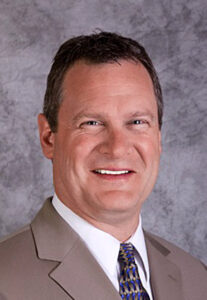Economists often reference the “downward rigidity of wages and prices” as one of the widely accepted tenets of their field. They obviously have not spent time working in the hotel industry. Experience has taught us (three times in the past two decades) that when demand drops, average daily rate declines soon follow. And these declines have deepened with each downturn. Conversely, the benefits of growing rate when occupancy levels improve is often understated.
Revenue managers and marketing directors are keenly focused on the top-line impacts of revenue decisions—including pricing. Owners and most GMs are more attentive to figures further down the profit and loss statement including gross operating profit and net operating income, since performance at this level is most often directly tied to the value of their hospitality asset.
Fortunately, a simple pricing formula has been created that will help clarify the risks associated with a given pricing decision on GOP—before that pricing decision is implemented. While tolerance for risk varies from one individual to the next and from one corporate culture to the next, at least all parties involved may now have a common starting point from which smart pricing decisions can be made.
As an example, perhaps you have an identified a need period in early May and you are thinking about doing a promotion to drive incremental business. You did a promotion last year at the same time and realized 250 room nights at a rate of $169 produced $42,250. Your property didn’t sell out on any given night last year, and you were reasonably pleased with the results. This year, you’d like to do even better, but aren’t certain whether you should raise rates to $189 and run the risk of selling fewer rooms or to lower rates to $149 in the hopes of selling even more roomnights.So, how can you assess the risks associated with either course of action?From a revenue perspective, the calculation is very straight forward. Revenues produced divided by the new rate will give you the number of rooms you need to sell to earn roughly the same revenue as the year prior. Note: potential outlet revenue capture (or loss) due to a greater number (or fewer number) of rooms sold can be considered, but we will ignore this in order to keep our example relatively simple.
Be the first to know, sign up here and stay up to date with our latest revenue management news, updates and special offers
$42,500 / $189 = 225 room nights…10% or 25 fewer roomnights required
$42,500 / $149 = 285 room nights…14% or 35 more roomnights required
Unfortunately, this does not shed light on the profitability of each possible decision. For that, you will need to gather a few figures:
- Baseline production—In this case, we will use 250 roomnights since that is what was produced last year.
- Rooms gross margin percent—Among other things, this figure can vary based on factors such as market segment, size of unit, in-room amenity package, quality scale and the market in which the property is located. Consult with your controller to obtain a reasonable estimate for your property. In this case, we’ll arbitrarily select $45 as our variable cost of sales amount, so our rooms gross margin will be 73.4% ($169 selling rate – $45 cost of sales = $124. $124/$169 = 73.4%)
- % change in rate—In our case, we have two possible rate adjustments. One in which we raise the rate from $169 to $189 and one in which we lower the rate to $149. In the first scenario, we will increase the rate by 11.8% and in the second, we will decrease the rate by 11.8%.
The final step in the process is to apply the room quantity risk factor to the baseline production figure to determine how many rooms need to be sold to mirror the prior year’s results from a GOP perspective. This will give you a better indication of the true risks associated with a given pricing move. Here how it works:
Scenario #1 (Increase rate from $169 to $189)
-13.85% x 250 baseline room nights = -35. Therefore, 35 fewer roomnights can be sold in order to make the same GOP. If you recall from the revenue calculation method above, the figure was 25 roomnights. This means that you can risk selling 10 fewer roomnights than you originally thought and still make the same profit. This may make the decision to increase rates just a little bit easier.
Scenario #2 (Lower rate to $149)
19.2% x 250 = 48. Therefore, 48 more rooms must be sold at the lower rate in order to make the same GOP. Compare this to 35 rooms calculated using the revenue method, and you can see that you actually have to sell 13 more roomnights than originally anticipated. This means that the risk factor associated with lowering rates in this case just increased.
Of course, other factors should also be considered when making a pricing decision. These may include things such as ancillary revenue capture potential, changes in variable costs at given occupancy thresholds, guest experience associated with various occupancy levels, property awareness goals, target mix of business, etc.
This pricing technique can be applied to almost any scenario including:
- – Corporate rate negotiations;
- – Call-in groups;
- – Promotional campaigns;
- – Published rate changes;
- – Seasonal pricing levels; and more.
By utilizing the “secret pricing formula,” you will be armed with objective data from which to enter a decision around pricing strategies. More importantly, your decision making will become more aligned with the interest of your owners.





